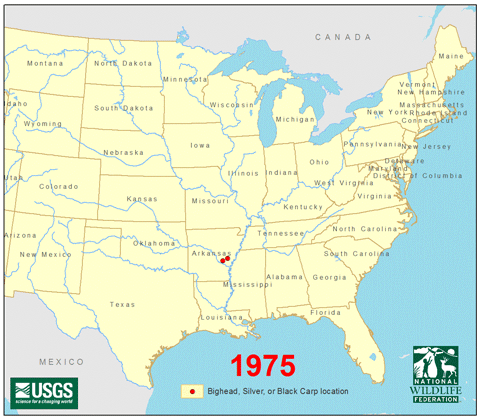
The geographic spread of Bighead, Silver or Black Carp species from 1975 to 2011. Photo: United States Geological Survey, National Wildlife Federation.
The alarming spread of Asian carp since the 1970s is seen on this map created by the United States Geological Survey and National Wildlife Federation.
It shows the carp’s initial foothold in Arkansas, where they were introduced to filter pond water on fish farms, and its rapid growth across the U.S.
In 2011, the map indicates how close they are to invading the Great Lakes Basin.

Federal officials identified 22 rivers that would provide ideal spawning locations and eventual Great Lakes access for Asian carp. Image: U.S. Geological Survey
Echo reported that carp were found in Chicago waters in October, and were quickly removed by the Illinois Department of Natural Resources.
The climate, nutrient-range, and abundance of plankton found in the basin makes the Great Lakes an ideal habitat for the invasive Asian carp. Should the carp spread to the lakes, they’ll have no predators, and native species will be forced to compete for food sources.
The U.S. Geological Survey has identified 22 rivers in the U.S. portion of the Great Lakes that would provide suitable spawning habitat for Asian carp.
